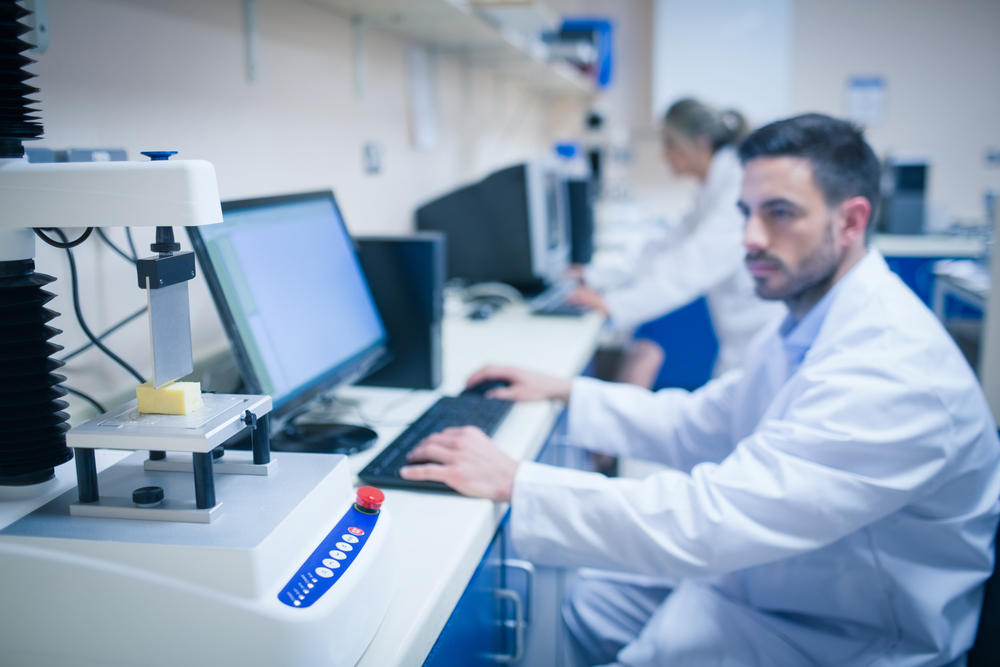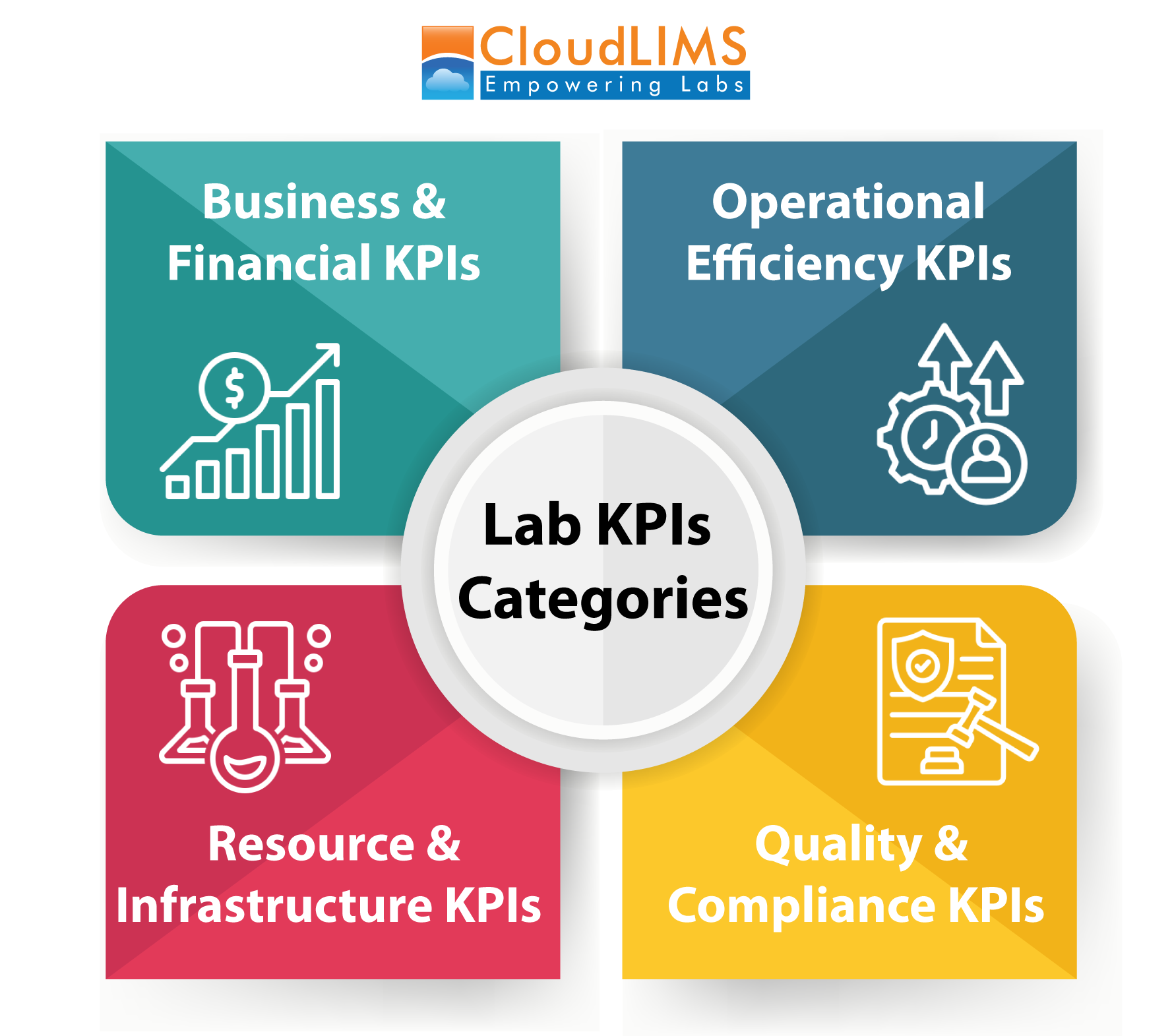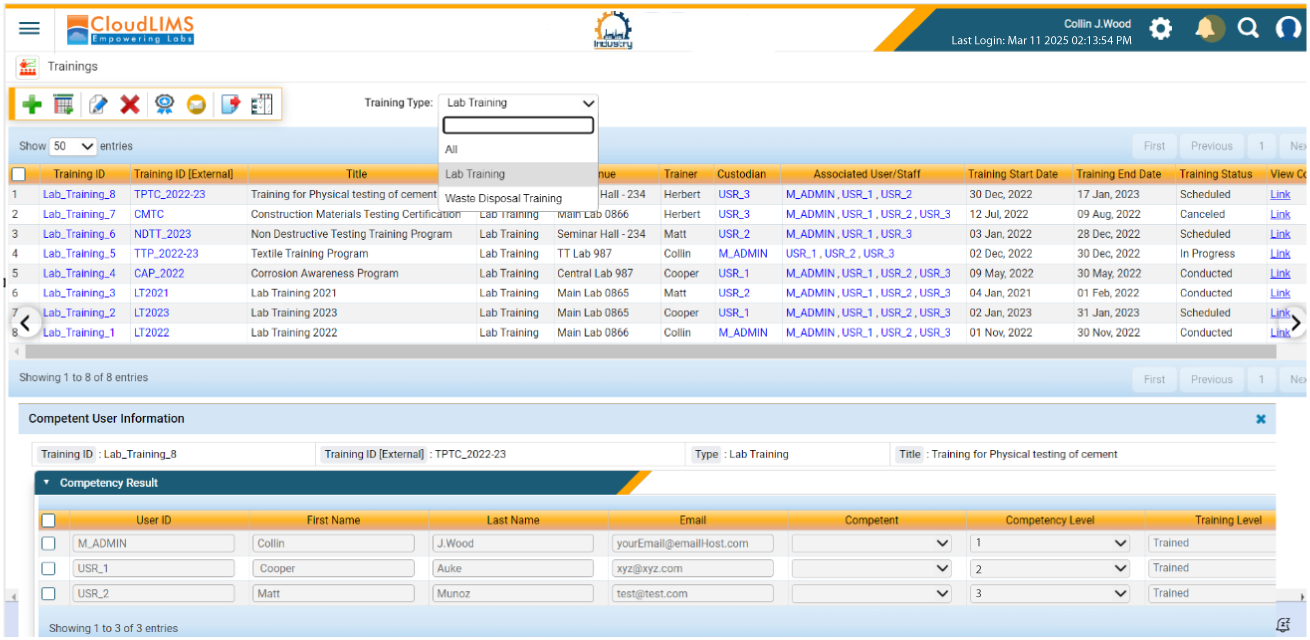
Key Laboratory KPIs and Lab Metrics Tracking Made Easy with a LIMS
You can’t improve what you don’t measure, and this cuts across industries. A recent study found that organizations that use data-driven decision-making are 5–6 times more likely to see major improvements in productivity and performance. For laboratories, whether in clinical research, cannabis, veterinary, or environmental testing, this is equally true. Labs operate in tightly regulated, high-stakes environments. Laboratory key performance indicators (KPIs) help ensure accuracy, compliance, and efficiency. They provide a clear way to track turnaround times, monitor regulatory compliance, and optimize costs.
Laboratories are data factories. They produce valuable, but often expensive, data. That’s why it’s critical to monitor lab performance closely. KPIs help identify areas that need improvement and guide better decision-making. A laboratory information management system (LIMS) makes it easier to collect, track, and analyze these metrics in real time. In this blog, we’ll delineate the essential KPIs every lab should monitor in 2025 to stay competitive, efficient, and compliant.
What are KPIs in a Laboratory?
KPIs in a laboratory are measurable values that reflect how effectively the lab is achieving its operational and strategic goals. They help track the performance of various lab activities, including processes, projects, and services. KPIs can range from turnaround time, sample rejection rates, and test accuracy to equipment uptime, staff productivity, and regulatory compliance. In essence, they offer a snapshot of the lab’s overall health and efficiency.
KPIs are also used to monitor the performance of critical assets such as inventory, instruments, and data management systems. They support better decision-making by providing objective insights into what’s working and what needs improvement. With labs generating large volumes of complex and often costly data, it’s essential to ensure that operations run smoothly and efficiently. By implementing the right KPIs and tracking them using a modern LIMS, laboratories can maintain high standards of quality, reduce errors, and improve resource utilization.
Understanding Laboratory KPIs: Four Pillars of Performance
To build a solid performance monitoring framework, it’s important to categorize KPIs based on what they measure and why they matter.
We recommend grouping lab KPIs into four major categories:
- Business and Financial KPIs – These metrics focus on revenue, costs, profitability, and client satisfaction.
- Operational Efficiency KPIs – These measure the productivity, resource utilization, and workflow efficiency of the lab.
- Quality and Compliance KPIs – These track the accuracy, consistency, and regulatory compliance of lab activities.
- Resource and Infrastructure KPIs – These assess how well the lab’s physical assets, inventory, and personnel are performing.

Figure 1: A schematic representation of major lab KPI categories (Figure courtesy of CloudLIMS).
Each category provides a different lens to evaluate your lab’s success and areas for improvement. Below are 21 essential KPIs categorized under these four pillars.
21 Key Lab Metrics You Should Know About in 2025
Business and Financial Lab Metrics
Aligning lab performance with profitability and customer satisfaction
These KPIs help labs track financial health and client satisfaction. They’re essential for understanding how the lab contributes to revenue growth and long-term business goals.
1. Revenue per Sample/Test – Tracks how much revenue is generated per test or sample, helping identify the most profitable services
2. Total Cost per Test – Calculates the full cost (labor, reagents, overhead) of performing each test to support pricing and budgeting
3. Monthly/Quarterly/Annual Orders – Measures the volume of service requests over time to forecast demand and resource planning.
4. Client Retention Rate – Indicates the percentage of returning clients over a specific period, reflecting satisfaction and loyalty.
5. Net Promoter Score (NPS) – Gauges client satisfaction and how likely they are to recommend your lab to others.
6. Customer Complaint Resolution Time – Measures the speed at which client complaints or concerns are resolved, affecting customer experience.
Operational Efficiency Lab Metrics
Driving productivity through smarter processes and resource use
These metrics assess how efficiently your lab operates daily. They help identify process bottlenecks, optimize workflows, and improve throughput.
7. Turnaround Time (TAT) – Measures the time between sample receipt and result delivery, a critical factor in client satisfaction.
8. Sample Throughput – Indicates how many samples are processed within a defined timeframe, showcasing lab productivity
9. Instrument Utilization Rate – Tracks how frequently lab equipment is used, helping optimize asset allocation.
10. Automation Utilization Rate – Measures the extent to which lab processes are automated, reducing manual labor and errors.
11. Tests per Full-Time Employee – Evaluates the number of tests completed per lab staff member, enabling labs to measure staff productivity.
Quality and Compliance Lab Metrics
Ensuring accuracy, consistency, and regulatory readiness
These KPIs are essential for maintaining high standards, achieving audit readiness, and consistently delivering reliable results.
12 Assay Reproducibility – Measures consistency of test results over multiple runs, indicating reliability and method robustness.
13. Error Rate – Tracks the frequency of data entry, analytical, or reporting errors, highlighting areas needing improvement.
14. Deviation Resolution Time – Monitors how quickly process deviations or incidents are identified and corrected.
15. QC Pass Rate – Calculates the percentage of tests that pass internal quality control checks without needing repeat testing.
16. Regulatory Compliance Rate – Evaluates adherence to industry regulations (e.g., GLP, ISO, FDA), ensuring audit readiness.
Resource and Infrastructure Lab Metrics
Maintaining a safe, well-functioning, and scalable lab environment
These KPIs focus on how well the lab’s assets and people are managed to support consistent, safe, and scalable operations.
17. Equipment Downtime – Measures the amount of time for which instruments are unavailable due to failures, missed or unscheduled calibrations, or improper maintenance, impacting output and staff productivity
18. Calibration & Maintenance Compliance – Tracks whether instruments are regularly serviced and calibrated per schedule.
19. Inventory Turnover Rate – Assesses the rate at which reagents and supplies are consumed and restocked, helping manage costs and prevent shortages.
20. Staff Training Completion Rate – Monitors the percentage of staff who’ve completed required safety, compliance, or technical training.
21. Occupational Health and Safety Incident Rate – Tracks the frequency of safety-related incidents, helping reduce risks and improve compliance.
How to Calculate Lab KPIs
Calculating laboratory KPIs involves collecting relevant data, selecting the right formulas, and consistently tracking results over time. While each KPI has a unique calculation, most are based on simple ratios or percentages. Here’s a general approach:
- Define the KPI Clearly
Know exactly what you’re measuring and why. For example, “Turnaround Time” refers to the time between sample receipt and result delivery. - Identify the Data Needed
Use data from your LIMS, spreadsheets, or lab logs. Ensure the data is clean, accurate, and consistently formatted. - Use the Appropriate Formula
Each KPI has a basic formula. For example:- Turnaround Time (TAT) = Result Delivery Time – Sample Receipt Time
- Error Rate (%) = (Number of Errors ÷ Total Tests Performed) × 100
- Revenue per Test = Total Revenue ÷ Number of Tests
- Track Regularly and Analyze Trends Monitor KPIs weekly, monthly, or quarterly depending on your goals. Look for patterns and compare them against benchmarks or historical performance.
- Visualize and Report
Use dashboards or KPI reports to communicate insights across teams and support data-driven decisions.
The Role of LIMS in Lab Metrics
A LIMS is essential for tracking and optimizing lab KPIs. It simplifies data collection, improves accuracy, and supports real-time decision-making. Here’s how a LIMS helps labs track key metrics:
- Automates data capture from instruments and sample barcodes, enabling real-time tracking of metrics like sample throughput and turnaround time (TAT).
- Tracks inventory turnover and cost per test, helping labs prevent stockouts, reduce waste, and improve budgeting.
- Monitors regulatory compliance and staff training completion, keeping labs audit-ready and aligned with industry standards. It also tracks the relative performance of staff through staff competency reports.
- Schedules and tracks equipment calibration and maintenance, reducing downtime and extending asset life.
- Centralizes record-keeping, making it easy to retrieve procedures, results, and QC data for audits and continuous improvement.
- Enables the configuration of unique formula expressions to automatically calculate KPIs such as turnaround time, error rate, and revenue per test or sample.

Figure 2: Manage staff training and compare the relative competency of staff using a LIMS (Figure courtesy of CloudLIMS).
A cloud-hosted LIMS solution with a user-friendly dashboard makes it even easier to track these metrics across teams and locations. With real-time visibility into lab performance, labs can make smarter, faster decisions and drive continuous improvement.
Know Your Numbers, Grow Your Lab
Lab success doesn’t happen by chance; it’s built on clear metrics and informed decisions. Tracking the right KPIs gives you a real-time pulse on your lab’s performance, from turnaround times and quality control to cost management and client satisfaction. When you know what to measure, you know where to improve. And with a modern LIMS to streamline it all, turning insights into action becomes second nature.
About CloudLIMS
CloudLIMS.com is an ISO 9001:2015 and SOC 2-certified informatics company. Their SaaS, in-the-cloud Laboratory Information Management System (LIMS), CloudLIMS, offers strong data security, complimentary technical support, instrument integration, hosting and data backups to help biorepositories, analytical, diagnostic testing and research laboratories, manage data, automate workflows, and follow regulatory compliance such as ISO/IEC 17025:2017, GLP, NELAC, and 21 CFR Part 11, at zero upfront cost. Their mission is to digitally transform and empower laboratories across the globe to improve the quality of living.
About the Author
Arun Apte, CEO, CloudLIMS
Arun Apte is a serial entrepreneur and laboratory research scientist specializing in bioinformatics. He founded CloudLIMS in 2014, bringing the benefits of a SaaS LIMS to the laboratory market. This has enabled hundreds of small labs including biorepositories, clinical research and diagnostic labs, and analytical testing labs, including food & beverage, cannabis, environmental, water, and material testing labs to gain the efficiency of a LIMS previously only affordable to large laboratories. Arun is an invited speaker at conferences all over the world. Recently, he was an invited speaker at the 2024 ACVP/ASVCP Annual Meeting.
Prior to founding CloudLIMS, he founded PREMIER Biosoft forging strategic partnerships with Thermo, Agilent, SCIEX, and other mass spectrometry instrument companies. Apte holds a B.A. in molecular and cell biology and biophysics from the University of California at Berkeley. He has published extensively on bioinformatics.
About Astrix
Astrix partners with many of the industry leaders in the informatics space to offer state-of-the-art solutions for all of your laboratory informatics needs. Our technology-agnostic approach delivers tailored solutions and expert talent to address even the most complex challenges. With deep expertise in system validation, data integrity, and risk management, we streamline implementation, ensure compliance, and identify system gaps to minimize long-term risks and costs. Whether you need strategic planning, technology integration, or staffing support, Astrix is your trusted partner for driving business success. Reach out today at www.astrixinc.com to learn how we can accelerate your growth and optimize operations with our specialized life science solutions.
Case Study: LabWare Centralized Data Review for a Global Biopharmaceutical Company
Overview A global biopharmaceutical company specializing in discovery, development,... LEARN MOREWhite Paper: Managing Data Integrity in FDA-Regulated labs.
New White Paper LEARN MORELET´S GET STARTED
Contact us today and let’s begin working on a solution for your most complex strategy, technology and strategic talent services.
CONTACT US



